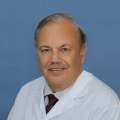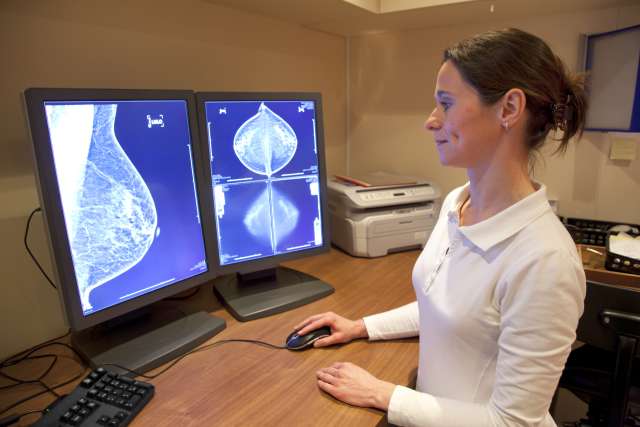In the early 1990s, women who were diagnosed with the HER2-positive subtype of breast cancer weren’t expected to live more than three-to-five years after diagnosis. Now, depending on the stage of the cancer at diagnosis, women with HER2-positive breast cancer have among the highest survival rates of all women with breast cancer. That is thanks to the revolutionary breast cancer drug Herceptin, which was developed by a team of scientists led by oncologist Dennis J. Slamon, MD (FEL ’82), PhD, director of clinical and translational research at the UCLA Health Jonsson Comprehensive Cancer Center and chief of hematology/oncology at the David Geffen School of Medicine at UCLA. Deemed the “drug that changed the breast cancer treatment landscape,” Herceptin has saved millions of women’s lives by targeting cancer at its genetic roots. Dr. Slamon spoke with Denise Heady, science communications and media relations manager for the UCLA Health Jonsson Comprehensive Cancer Center, about the paradigm-shifting approach to cancer treatment and how the discovery has opened up an entirely new area of research.
Since its introduction in 1998, Herceptin has saved the lives of nearly 3 million women by targeting a specific genetic alteration. This was an entirely new way of treating cancer. How did you come up with the rationale for developing this drug?
Dr. Slamon: The rationale for developing Herceptin, and for all the things that have come after it in terms of this class of targeted therapy, was relatively simple. It was an approach that was based on trying to change what we were doing in cancer medicine, which was throwing in a bomb and hoping that would kill more bad cells than good cells. Instead, we wanted to try to study the cancer cell at a molecular level and identify what was broken and find out if we could target that specifically. The hope would be if we could target that specifically, we’d come up with something that was, hopefully, more effective and safer because normal cells wouldn’t have what was broken, only the cancer cells. So, that was really the rationale behind looking for things that might be broken and unique to cancer cells.
“Today, we’re using lessons learned from the HER2 story to really chase a number of other cancers, including some of the most difficult cancers to treat like pancreatic cancer, ovarian cancer, lung cancer and colorectal cancer. We’re doing the same thing with more sophisticated technology than we had 25 years ago.”
How does Herceptin work?
Dr. Slamon: Herceptin is an antibody that works by attaching itself to the HER2 protein. The HER2 alteration occurs when there are too many copies of the HER2 gene in the tumor cells. The normal cells do not have that mistake. It’s a genetic mistake that occurs; it’s not inherited. When I use the word genetic, it means it happens at the gene level, not that it’s inherited from your parents or somewhere along your family line. It means that when the body’s Xerox machinery is copying your DNA, a mistake gets made in these breast cells that then become malignant. The Xerox machinery makes too many copies of a particular region of a chromosome that contains the HER2 gene. The HER2 gene makes a protein that regulates growth; it actually stimulates growth. So, it makes sense that whenever there are too many copies and there’s too much of the protein, you get abnormal growth, which develops into this very aggressive HER2-positive breast cancer. The Herceptin antibody attaches to this protein and stops its functioning, and the antibody also identifies the protein to the immune system more effectively to allow the immune cells to come in and do their work to destroy those malignant cells.

What was your reaction when you saw the initial results from the phase 3 clinical trial?
Dr. Slamon: It was pretty exhilarating to see that what we had thought about in theory and what we were able to show in models really worked in patients. It was sort of a vindication, that the approach we were taking was correct. But it was also validation that we could continue this approach and find other targets that were driving cancers to help us develop new and novel therapies. And that’s really one of the exciting things about the HER2 story. It was an early research process that helped define what happened afterward in a lot of different fields of cancer. And that’s been pretty exciting to see, as well.
You often say the women who participated in the clinical trial for Herceptin are the real heroes of this story. Can you explain?
Dr. Slamon: These are women who had other options. They could go on to other kinds of therapies or they could go into other clinical trials. They looked at our clinical trials as something that made sense to them in terms of a treatment approach. They volunteered to participate in a clinical trial, and in that sense, they weren’t just subjects, they were active colleagues. They were partners in the clinical trial. And I believe that they deserve as much credit as any of us who were involved in the research work, because they were very much a part of this research.
You gave scientists a new way of understanding and treating one of the most dreaded diseases. How has this breakthrough guided your research today?
Dr. Slamon: Today, we’re using lessons learned from the HER2 story to really chase a number of other cancers, including some of the most difficult cancers to treat like pancreatic cancer, ovarian cancer, lung cancer and colorectal cancer, just to name a few. We’re doing the same thing with more sophisticated technology than we had 25 years ago. But we’re able to do the same sort of thing: Take a cancer cell and really dissect it at a molecular level, identify what’s broken and see how we can effectively treat it. We also have more treatment tools — not only traditional medications like pills or chemotherapy, but also targeted therapies like antibodies. Or new pills that only affect abnormal proteins that are playing a role in the cancer process, and, thus, don’t have an effect on normal cells, so they are safer. All of that has opened up incredible vistas in cancer research and cancer therapy that I think are only going to improve over time. What we’re doing now is trying to really exploit the lessons learned and expand those into other cancers.

What new research are you working on that you are most excited about?
Dr. Slamon: We have some really exciting things that are going on right now for ovarian cancer, which is a particularly deadly disease. While we have some therapies for it, these patients frequently have recurrences and over the long haul, many of them don’t do well. We have some developments that have already made it into the clinic that are showing early results that are positive.
What advice do you give to the next generation of physician-scientists?
Dr. Slamon: I think the best advice I can give the next generation of scientists is the same thing that sort of drove us with the HER2 story. And that’s to be your own worst critic. If your data keeps telling you the same thing, stick with it, no matter if people are saying that can’t be right or it doesn’t fit with what we’ve seen previously. If your data consistently tells you the same thing and you’ve really critiqued it carefully, then stick to your guns and pursue it. And I think that really helped us with the HER2 story, and it helped convince a small core of other people in the industry who believed this approach might work, that it was a valid approach to take, as well.
In 2019, Dr. Dennis Slamon won the prestigious Lasker-DeBakey Clinical Medical Research Award for his work on the development of Herceptin.




